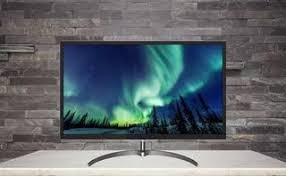With WQHD, witness the world in Wide Quad High Definition – a technology that promises crisp clarity and vibrant visuals.
But what sets this display apart from the rest? Explore the intricacies of WQHD, from its resolution to applications, and discover how it stands against other standards.
Unravel the future trends shaping WQHD development, and grasp a glimpse into the evolving landscape of display technology.
Advantages of WQHD Displays
Explore the crystal-clear visuals and enhanced productivity that WQHD displays offer users in the digital realm. With a higher resolution than Full HD, WQHD provides sharper images, making every detail stand out on your screen. Whether you’re editing photos, watching videos, or working on spreadsheets, the clarity of WQHD enhances your overall viewing experience.
One of the key advantages of WQHD displays is the increased screen real estate they offer. With more pixels packed into the screen, you can fit more content without compromising on quality. This means you can have multiple windows open simultaneously, boosting your multitasking capabilities. Imagine seamlessly switching between tabs, applications, and documents without any lag or overlap.
Moreover, the enhanced pixel density of WQHD displays results in smoother text and sharper graphics. This not only reduces eye strain during prolonged use but also ensures that every word and image is crisp and clear. Embrace the benefits of WQHD displays and revolutionize your digital workspace today.
Understanding WQHD Resolution
To grasp the essence of WQHD resolution, consider how the increased pixel count contributes to the clarity and detail of displayed content. WQHD, which stands for Wide Quad High Definition, offers a resolution of 2560×1440 pixels, providing four times the pixels of a standard 720p HD display. This higher pixel count results in sharper images, more vibrant colors, and enhanced visual quality compared to lower resolution displays.
When viewing content on a WQHD display, you can appreciate finer details in images, videos, and text due to the increased pixel density. This heightened level of clarity makes WQHD displays particularly suitable for tasks that require precision and attention to detail, such as graphic design, photo editing, and video production. Additionally, the extra screen real estate offered by WQHD monitors allows for better multitasking capabilities, enabling you to work on multiple windows simultaneously without compromising on image quality.
Applications of WQHD Technology
Enhance your visual experience and productivity with the versatile applications of WQHD display technology. WQHD monitors are excellent for tasks that demand high-resolution visuals, such as graphic design, video editing, and gaming. The increased pixel density allows for sharper images, finer details, and a more immersive viewing experience.
Professionals in fields like architecture, photography, and CAD design benefit greatly from the enhanced clarity that WQHD displays offer. The additional screen real estate provided by WQHD monitors enables you to multitask efficiently, with ample space for multiple windows and applications simultaneously.
Moreover, the crisp image quality of WQHD monitors enhances your overall computing experience, making everyday tasks like web browsing, document editing, and watching videos more enjoyable. With WQHD technology, you can enjoy a heightened level of detail and clarity that standard Full HD displays may not provide. Whether you’re a creative professional, a gamer, or someone who values a high-quality visual experience, WQHD technology can significantly elevate your computing experience.
Comparing WQHD Vs. Other Standards
When considering display standards, WQHD stands out for its superior resolution and visual clarity compared to other common formats. WQHD, with a resolution of 2560×1440 pixels, offers sharper images and more detailed content than Full HD (1920×1080) and HD (1280×720) displays. This higher pixel density results in crisper text, more vibrant colors, and enhanced overall viewing experience.
In contrast, lower-resolution displays may appear pixelated or lack the level of detail provided by WQHD. Additionally, when compared to 4K UHD (3840×2160) displays, WQHD strikes a balance between resolution and performance, offering a noticeable improvement in image quality without requiring as much graphical processing power. While 4K UHD provides even higher resolution, WQHD remains a popular choice for those seeking an optimal viewing experience without the need for ultra-high-resolution content.
Future Trends in WQHD Development
In upcoming advancements, expect WQHD display technology to embrace innovative features and enhanced functionality. Manufacturers are likely to focus on improving aspects such as color accuracy, brightness levels, and refresh rates to provide users with a more immersive viewing experience.
One trend to watch out for is the integration of advanced HDR (High Dynamic Range) technology into WQHD displays, offering a wider range of colors and greater contrast between dark and light shades. Additionally, expect to see the development of WQHD displays with higher refresh rates, catering to the needs of gamers and graphics professionals who require smoother motion rendering.
Furthermore, as demand for curved displays continues to grow, it’s anticipated that WQHD monitors with curved screens will become more prevalent in the market. These curved displays can enhance the viewing experience by providing a more natural field of view and reducing distortion at the edges of the screen.
Conclusion
Overall, WQHD displays offer a superior visual experience with their high resolution and vibrant colors.
The technology behind WQHD is constantly evolving to meet the demands of modern users who require crisp and clear images for various applications.
As the industry continues to push the boundaries of display technology, we can expect to see even more advancements in WQHD development in the future.
So, if you’re looking for top-notch visual quality, WQHD is definitely the way to go.
